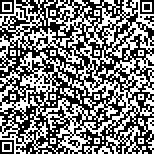| Quote
: |
张冠林,向晶,焦子远,卓越,易细芹,张泓.基于天枢与上巨虚穴经皮神经电刺激观察对溃疡性结肠炎模型大鼠结肠组织TLR9/MyD88/NF-κB蛋白表达的影响[J].湖南中医药大学学报英文版,2024,44(1):128-134.[Click to copy
] |
|
| |
|
|
| This paper
:Browser 1821times Download 765times |
| 基于天枢与上巨虚穴经皮神经电刺激观察对溃疡性结肠炎模型大鼠结肠组织TLR9/MyD88/NF-κB蛋白表达的影响 |
| 张冠林,向晶,焦子远,卓越,易细芹,张泓 |
| (湖南中医药大学针灸推拿与康复学院, 湖南 长沙 410208) |
| 摘要: |
| 目的 基于“合募配穴”原则观察经皮神经电刺激(transcutaneous electrical nerve stimulation, TENS)对溃疡性结肠炎(ulcerative colitis, UC)模型大鼠结肠组织Toll样受体9(toll-like receptor 9, TLR9)/髓样分化因子88(myeloid differentiation factor 88, MyD88)/核因子-κB(nuclear factor-κB, NF-κB)信号通路相关蛋白表达的影响,探讨TENS治疗UC的相关机制。方法 从48只SPF级成年SD大鼠中随机抽取12只作为空白组。其余36只通过2-4-6三硝基苯磺酸(2-4-6 trinitrobenzene sulfonic acid,TNBS)/乙醇法制备UC大鼠模型,成模后再次随机分为模型组、TENS组、阳性药物组,每组12 只。成模后第1 天开始干预:模型组仅行捆绑固定;TENS组捆绑固定后刺激天枢、上巨虚两穴;阳性药物组用225 mg/kg剂量的柳氮磺胺吡啶混悬液灌胃。以上各组干预均每天1 次,共10次。观察记录各组大鼠每天食量和体质量。干预结束后,HE染色观察各组大鼠结肠组织病理学变化;ELISA法检测结肠组织白细胞介素-6(interleukin-6, IL-6)、肿瘤坏死因子-α(tumor necrosis factor-α, TNF-α)、白细胞介素-1β(interleukin-1β, IL-1β)炎性因子的含量;Western blot法检测结肠组织TLR9、MyD88、NF-κB蛋白的表达量变化。结果 (1)与空白组相比:模型组大鼠结肠组织出现明显溃疡面,上皮细胞大面积萎缩,炎性因子大量浸润,IL-6、TNF-α炎性因子含量升高(P<0.05);TLR9、MyD88、NF-κB蛋白表达量上调(P<0.05)。(2)与模型组相比:TENS组和阳性药物组结肠组织损坏情况较轻,上皮细胞黏液较充分,腺体分支较少,炎性细胞浸润面积小;IL-6、TNF-α含量减少(P<0.05);TLR9、NF-κB蛋白表达量降低(P<0.05)。(3)与阳性药物组相比:TENS组TNF-α、IL-1β的含量及TLR9、MyD88、NF-κB蛋白表达量相对较高(P<0.05)。结论 TENS能够保护肠道上皮细胞,减轻肠道炎症,其机制可能与降低结肠细胞促炎因子水平,抑制TLR9/MyD88/NF-κB信号通路蛋白的过表达有关。 |
| 关键词: 溃疡性结肠炎 经皮神经电刺激 Toll样受体9 髓样分化因子88 核因子-κB 炎性因子 |
| DOI:10.3969/j.issn.1674-070X.2024.01.019 |
| Received:August 12, 2023 |
| 基金项目:湖南省自然科学青年基金项目(2022JJ40316);湖南中医药大学校级研究生创新课题(2022CX105)。 |
|
| Effects of transcutaneous electrical nerve stimulation at “Tianshu” (ST25) and “Shangjuxu” (ST37) acupoints on the protein expressions of TLR9/MyD88/NF-κB signaling pathway in colonic tissue of model rats with ulcerative colitis |
| ZHANG Guanlin,XIANG Jing,JIAO Ziyuan,ZHUO Yue,YI Xiqin,ZHANG Hong |
| (School of Acupuncture-moxibustion, Tuina and Rehabilitation, Hunan University of Chinese Medicine, Changsha, Hunan 410208, China) |
| Abstract: |
| Objective To observe the effects of transcutaneous electrical nerve stimulation (TENS) on toll-like receptor 9 (TLR9)/myeloid differentiation factor 88 (MyD88)/nuclear factor-κB (NF-κB) signaling pathway-related protein expressions in colonic tissue of ulcerative colitis (UC) model rats based on the principle of "He-sea and front-Mu point combination", and to explore the related mechanisms of TENS in treating UC. Methods Twelve of 48 SPF adult SD rats were randomly selected as blank group. The remaining 36 UC rat models were prepared by 2-4-6 trinitrobenzene sulfonic acid (TNBS)/ethanol method, and then randomly divided into model, TENS, and positive drug groups after modeling, with 12 rats in each group. Intervention began on the first day after modeling. Model group was only bound and fixed; TENS group was stimulated at "Tianshu" (ST25) and "Shangjuxu" (ST37) acupoints after being bound and fixed; positive drug group was intragastrically administered with 225 mg/kg of sulfasalazine suspension. All groups were intervened once a day for a total of 10 times. The daily food intake and body weight of rats in each group were observed and recorded. After the intervention, HE staining was used to observe the pathological changes of colonic tissue in each group, ELISA to check the content of inflammatory factors of interleukin-6 (IL-6), tumor necrosis factor-α (TNF-α), and interleukin-1β (IL-1β), and Western blot to examine the changes in the expression levels of TLR9, MyD88, and NF-κB proteins. Results (1) Compared with blank group, the colonic tissue of rats in model group showed obvious ulceration, large-area atrophy of epithelial cells, extensive infiltration of inflammatory factors, and increased content of IL-6 and TNF-α (P<0.05); the expression levels of TLR9, MyD88, and NF-κB proteins were up-regulated (P<0.05). (2) Compared with model group, TENS and positive drug groups showed milder colonic tissue damage, more sufficient epithelial cell mucus, fewer glandular branches, and smaller area of inflammatory cell infiltration; the content of IL-6 and TNF-α decreased (P<0.05); the expression levels of TLR9 and NF-κB proteins were reduced (P<0.05). (3) Compared with positive drug group, the content of TNF-α and IL-1β and the expression levels of TLR9, MyD88, and NF-κB proteins in TENS group were relatively higher (P<0.05). Conclusion TENS can protect intestinal epithelial cells and alleviate intestinal inflammation, and its mechanism may be related to reducing the level of pro-inflammatory factors in colonic cells and inhibiting the overexpression of TLR9/MyD88/NF-κB signaling pathway proteins. |
| Key words: ulcerative colitis transcutaneous electrical nerve stimulation toll-like receptor 9 myeloid differentiation factor 88 nuclear factor-κB inflammatory factors |
|

二维码(扫一下试试看!) |
|
|
|
|


